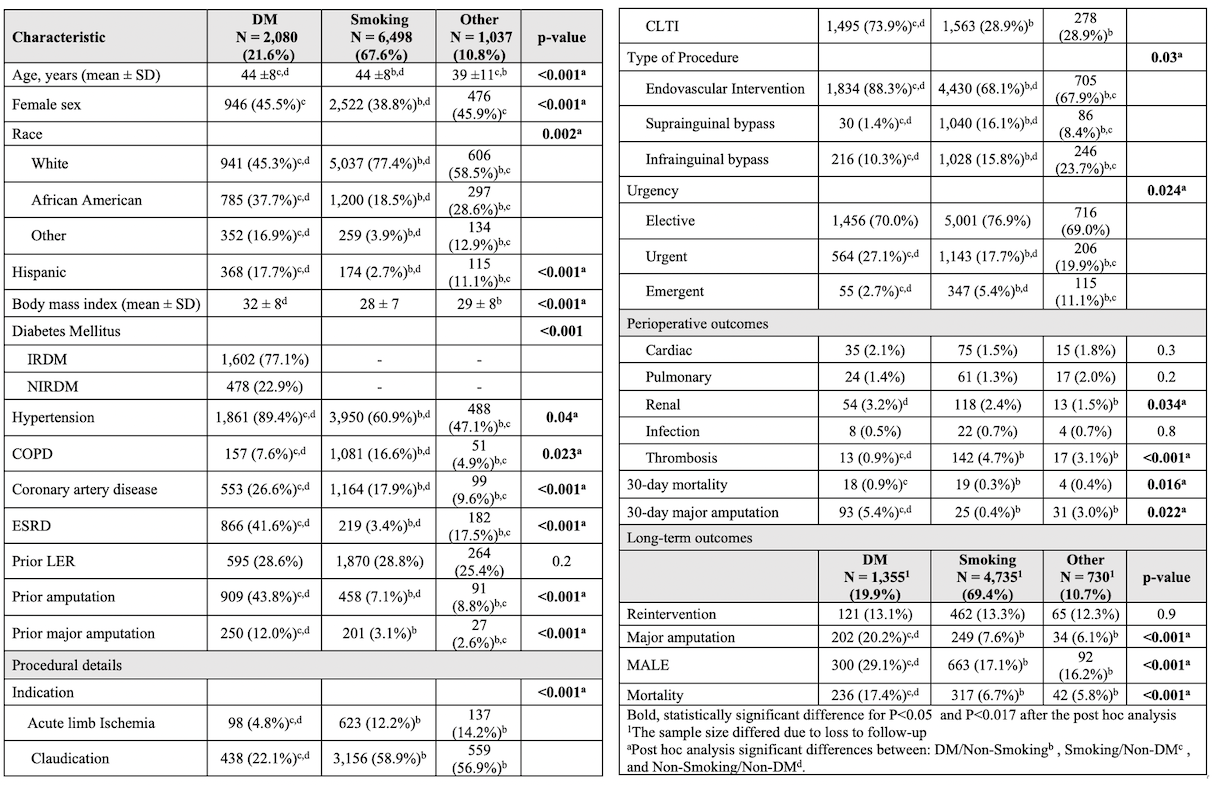Back to 2024 Display Posters
Risk Factors of Premature PAD and Associated Outcomes
Dana Alameddine, MD, Martin Slade, MPH, PhD, Andrew DeWan, PhD, He Wang, MD PhD, Arya Mani, MD, Carlos Mena-Hurtado, MD, Silvio E. Inzucchi, Cassius Iyad Ochoa Chaar, MD,MS.
Yale University School of Medicine, New Haven, CT, USA.
Objectives: Patients with premature peripheral arterial disease (PAD) are at high risk for major amputation after lower extremity revascularization (LER). Even though diabetes mellitus (DM) and smoking are both common and widely considered risk factors in this population, their impact on outcomes has not been well studied. This paper aims to better characterize individual risk factors contributing to premature PAD and their associated outcomes.
Methods: The Vascular Quality Initiative databases for peripheral vascular interventions, infrainguinal bypass, and suprainguinal bypass were reviewed. Only patients with premature PAD (age?50) were included. Patients were stratified into 3 groups based on risk factor: DM only, smoking only, and Other (no DM or smoking). Patients with concomitant DM and smoking were excluded. The characteristics and outcomes of the 3 groups were compared.
Results: Of 282,593 patients undergoing LER, 5.5% (N=15,511) had premature disease. After excluding patients with concomitant DM and smoking (N=5,896, 38%), 9,615 patients were divided into 3 groups: DM (21.6%), Smoking (67.6%), and Other (10.8%). Patients with DM were more likely to be African American and/or Hispanic, while smokers were more likely to be White males. Patients with DM had more other comorbidities and were more likely to have a history of prior amputations (both major and minor). Interestingly, patients with neither DM nor smoking (Other group) were more likely to present at a younger age and with acute limb ischemia (ALI). Patients with DM had significantly higher perioperative and long-term major amputation and mortality compared to the 2 other groups. (Table) By Kaplan Meier curves, the DM group also had the lowest amputation-free survival at 2 years (79% vs 91% vs 92%, Log-rank P<0.001). On Cox regression analysis, DM (HR = 1.86 [1.09-3.17]), but not smoking, was independently associated with major amputation.
Conclusion: DM as a risk factor, but not smoking, is highly associated with amputation both prior to and after revascularization in patients with premature PAD. Other risk factors need further characterization to better understand this more virulent form of PAD.
Table.

Back to 2024 Display Posters
